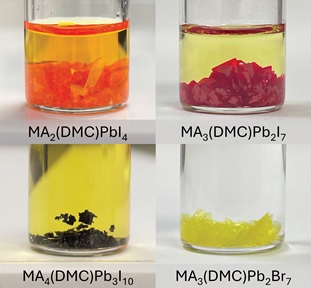Making way for 6G
Silicon chips developed by NTU researchers led by Assoc Prof Ranjan Singh pave the way for smoother 6G connectivity.
Top: Silicon chip that transmits data at 160 gigabits per second. Bottom: Silicon chip used for channel isolation. Terahertz waves flow without scattering in the red regions of the chips. Credit: NTU.
Fast and reliable networks provide more than just a clear and smooth video streaming experience; it shapes the way our globalised society communicates. At the pinnacle of performance, 6G may pave the way for an even more connected world.
Operating within the terahertz range of the electromagnetic spectrum – in between microwaves and infrared light – 6G networks can be used to send information at unprecedented speeds.
However, 6G currently suffers from signal scattering and interference, limiting its rate of transmission to a hundredth of its maximum predicted rate: 1 terabit per second.
In a study led by Assoc Prof Ranjan Singh of NTU’s School of Physical and Mathematical Sciences, researchers addressed these limitations by devising two silicon chips that allow terahertz waves to deliver data more efficiently.
The chips consisted of rhombusshaped cells, each comprising two triangular holes, with one bigger than the other, where the smaller triangles pointed in the opposite direction of the larger ones. Terahertz waves entering the chip flowed along the interface between the different sets of holes and were protected from scattering.
One chip could transmit a single data signal at rates of up to 160 gigabits per second and be turned on and off using light.
The scientists used the other chip to isolate different channels of information and found that they could achieve two well-isolated data signals. One channel enabled real-time high-definition video streaming at 1.5 gigabits per second, while the other supported data transmission at 40 gigabits per second.
According to Assoc Prof Singh, “the new chips are stepping stones for developing terahertz integrated circuits for emerging 6G devices”.
The research was reported in “Phototunable chip-scale topological photonics: 160 Gbps waveguide and demultiplexer for THz 6G communication”, published in Nature Communications (2022), DOI: 10.1038/s41467-022-32909-6.
The article appeared first in NTU's research and innovation magazine Pushing Frontiers (issue #22, August 2023).




.tmb-listing.jpg?Culture=en&sfvrsn=29c7e020_1)
.tmb-listing.jpg?Culture=en&sfvrsn=55153609_1)

